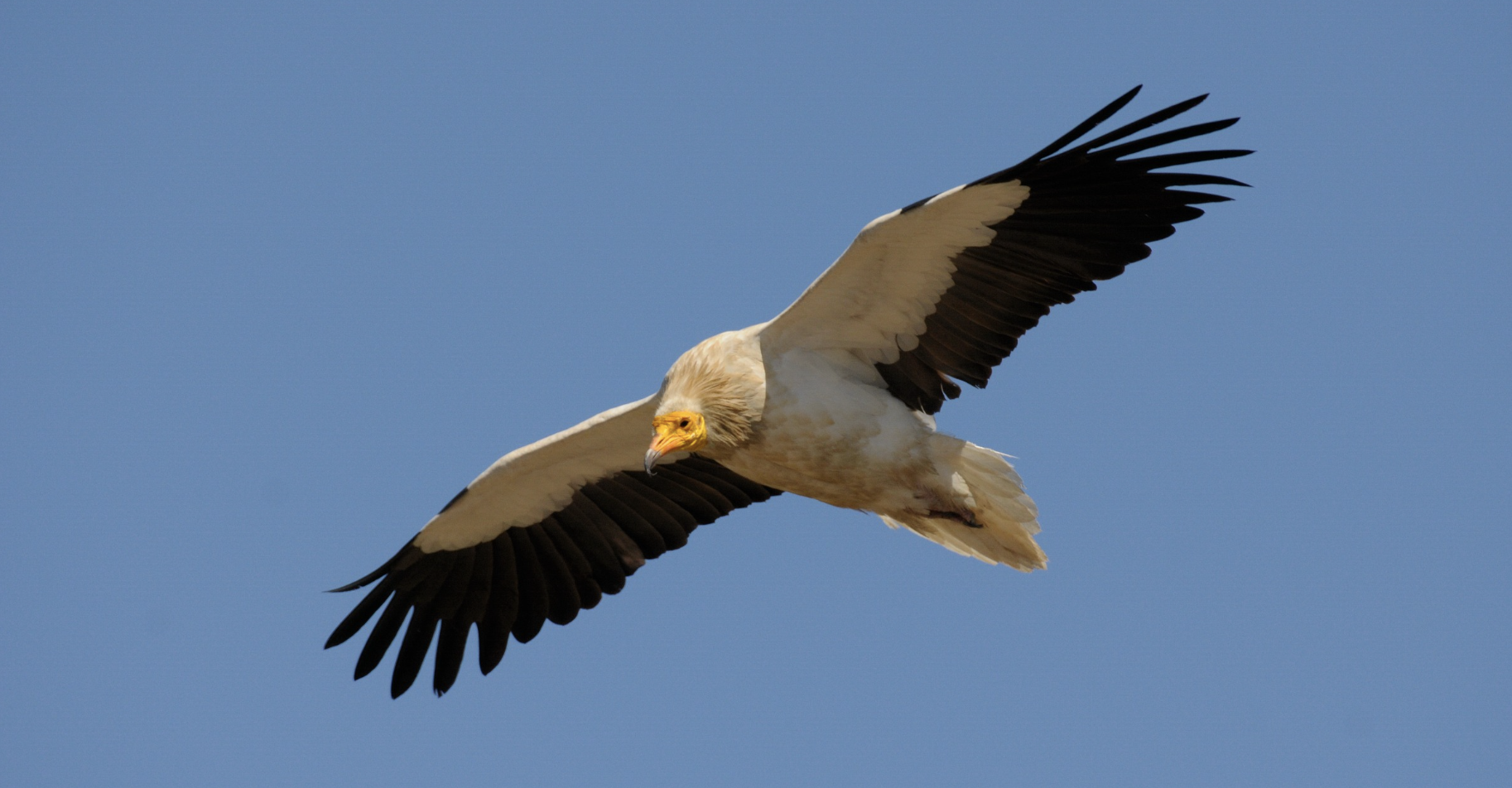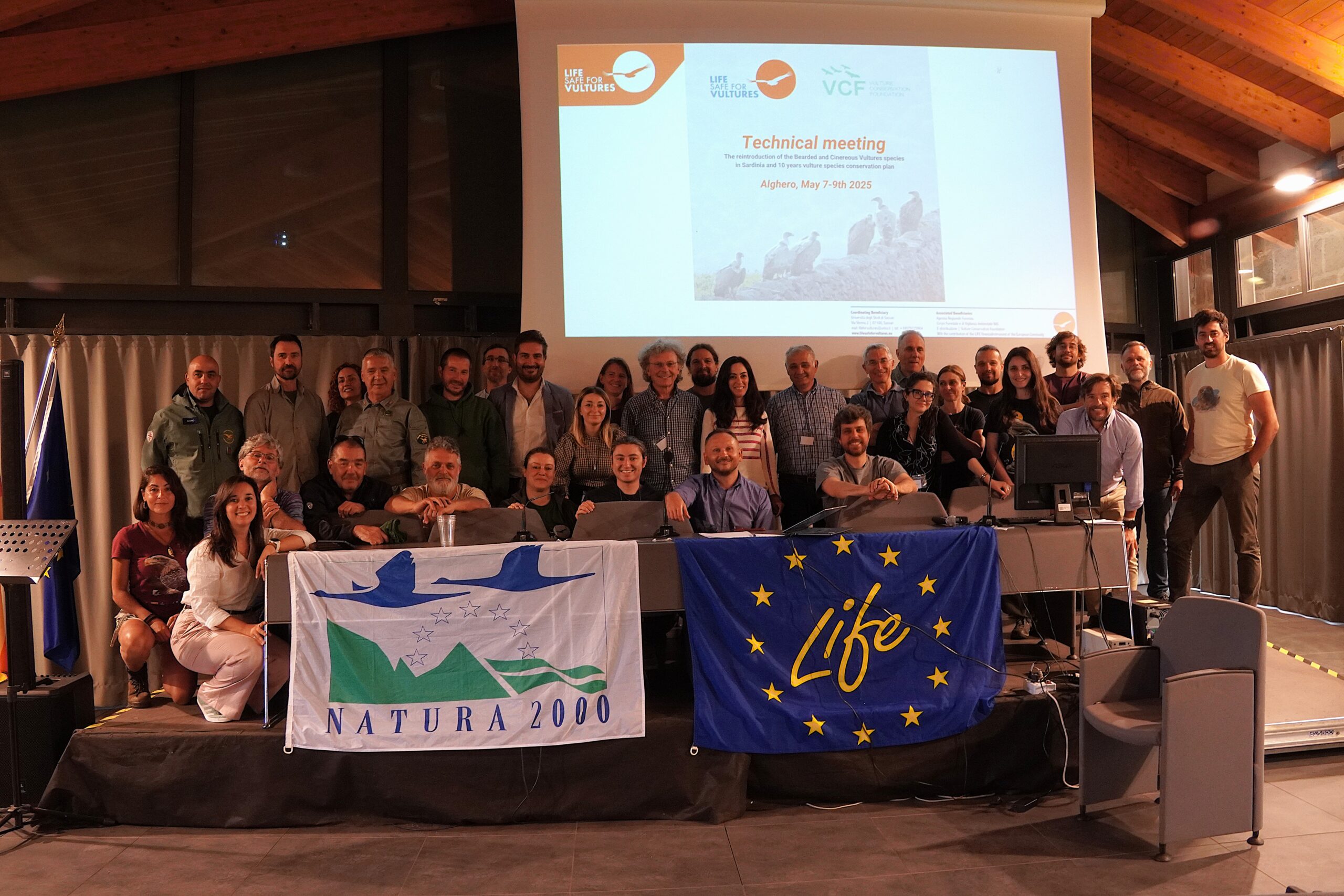After Egyptian vulture Poiares reached the wintering grounds in Mali in late October, our eyes were on Faia, the last one of the 5 Egyptian vultures that have been equipped with a GPS tag as part of the LIFE RUPIS project and that had not sent any signal after starting the migration through the Sahara desert.
Faia is a female Egyptian vulture that was captured at the Escalhão supplementary feeding site in June, and bred successfully in the Águeda valley, on the Spanish side of that international river.
Faia had left the Douro canyon on Thursday 24th August – in fact she was the first of the 5 Egyptian vultures tagged in the Douro within the LIFE RUPIS project to migrate. Then, on the 1st September, we lost track of her when she left Morocco and was entering Algeria, probably flying into an area with no GSM coverage in the desert – and we were without notice from her since then. Now, more than two months later, Faia appeared in Mali just south of the Mauritanian border.
GSM coverage is fragmented in the desert and the experience that we have with the birds tagged in RUPIS is that we often are without notice for some days or a few weeks. But after two months, we started to assume the worst, that she died somewhere – fortunately she has now resurfaced to life in our screens!
All 5 birds tagged within the RUPOIS project managed the crossing of the Sahara and are now in wintering grounds. From Douro, Bruçó and Poiares we get more or less regular updates. Rupis, the only bird which was tagged in 2016, has not sent any signal in the last month – we hope that he is doing fine and will connect soon.
The 5 birds are wintering in Mali or just across the border in Senegal (see map). Douro and Rupis spent some time in the same National Park (Parc National de la Boucle). All birds used different paths south, with some small overlap (see map).
You can follow the movements of all these birds at our website here – https://www.4vultures.org/our-work/monitoring/egyptian-vulture-online-maps/
The LIFE RUPIS project aims to implement actions to strengthen the populations of the Egyptian vulture (and the bonelli´s eagle) at the trans-border Douro, by reducing the mortality of these birds and increasing their breeding success. The Egyptian vulture is the smallest vulture in Europe, and it is classified as “Endangered” – in Europe its populations have declined by 50% over the last 40 years.
The project includes equipping electric lines against electrocution, several actions that aim to minimize the threat of illegal poisoning, targeted management of over 1,000 hectares of important habitats for the species and also the creation of a network of supplementary feeding stations.
The project is implemented by the VCF and partners, including SPEA (BirdLife in Portugal), ATN and Palombar (regional conservation organisations in NE Portugal), the Junta de Castilla y Leon & the Fundación Patrimonio Natural de Castilla Y León, the Portuguese electricity distributor EDP-D, the Portuguese statutory conservation agency ICNF and the Portuguese environmental police force (GNR), and is co-funded by the MAVA Foundation.


